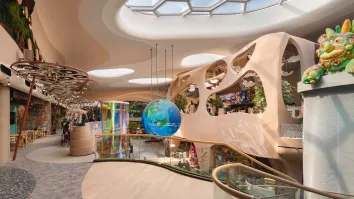
How global brands can ride the e-commerce wave in Southeast Asia
ZALORA provides brands with data-driven insights derived from its 2.6 million users.
E-commerce in Southeast Asia (SEA) grew rapidly as consumers switched to online channels. As this growth persists in the coming years, the challenge now for retailers is to better understand the “very complex and diverse” market.
The region has seen some 40 million new internet users in 2020, according to a report by Google, Temasek, and Bain & Co. This growth also led to a 23.9% year-on-year rise in ZALORA’s active customers, driving a 41.4% increase in the company’s net merchandise value in the first quarter of 2021.
“SEA is a very complex and diverse region, most brands tend to either establish logistic hubs in Singapore and try and cater the whole region from them, or work with a different partner for each country through a franchisor or distributor network,” Simone Cortini, ZALORA's Marketplace and Platform Services director, told Retail Asia.
“Whilst distributor networks have a value for the offline world in a connected online world, they often bring issues such as cross-country price discrepancies and cross-country assortment discrepancies,” he also said, adding this could drive customers away over time and lead them towards other brands.
Seizing SEA’S e-commerce momentum
In order for fashion and retail brands to stay ahead in the game, Cortini said the brands must ensure that they have a clear omnichannel strategy and access to strong decision-making driving data. They must also have a coherent customer experience and service quality across digital channels and a locally adjusted and tailored marketing strategy.
ZALORA fulfills all four through its Operations by ZALORA service suite as well as TRENDER, which helps it deliver deep data insights to navigate the complex SEA market.
“As more consumers embrace online shopping, one of the most critical resources that brands need to harness would be data,” Cortini said.
This is to “derive genuine insights about consumers’ needs so they can better anticipate shopping behaviour and curate more effective engagement strategies, design processes, and even demand projections.”
Through this, brands are able to present the right product offerings at the right price and through the right channels. ZALORA, for instance, uses TRENDER Professional to mine data from its 2.6 million active users, allowing it to provide insights on geo segmentation, buying behaviour, design intelligence, assortment, and pricing.
TRENDER proved to be an asset amidst the pandemic when ZALORA introduced a COVID-19 Sales Dashboard in aid of brands affected by the sudden shift in retail trends and consumer behaviour. ZALORA has so far recorded over 1,000 subscriptions on TRENDER. It has also partnered with global brands, such as Nike and Under Armour.
ZALORA also provides an e-distribution solution that gives brands access to its logistics and delivery capabilities for products sold on their websites and online marketplaces. This could also accelerate brands’ e-commerce growth in the region without heavy capital expenditures.
The e-retailer has been tapped by Puma and Superdry in their expansion to Indonesia and the Philippines. It is also looking to deepen its partnership with H&M Group, which will be launching new collections. Through this, ZALORA aims to eventually fulfill distribution services across Southeast Asia.
“By being an e-commerce enabler, we hope to deepen ZALORA’s impact on the wider landscape in the region,” he said.
What to expect
Cortini said lifestyle brands—particularly in sports, loungewear, and kids, as well as in the wellness category—saw an increase in demand in the past year as consumers prioritised their health and wellbeing. He expects this to continue growing in some parts of Southeast Asia.
In addition, ZALORA has also observed an emerging category called “Earth Edit,” which will allow the e-commerce platform to introduce a curated assortment of products that are in line with its sustainability criteria.
This will also likely continue as he noted that nearly 90% of the customers who were surveyed have shown interest in shopping for green products.
“Going forward, we are also expecting live and social commerce to grow further,” he said.
“Live streaming adds a strong emotional connection to online shopping, which can help to bridge the gap between the online and offline shopping experience.”
The following year, however, will not come without challenges as consumers continue to rely on e-commerce, Cortini said. This will particularly arise as fashion and retail brands attempt to keep up with the demand boom within the diverse market of Southeast Asia and scale their e-commerce efforts effectively.
Retailers may also face difficulties over the mid- and last-mile legs of the delivery due to strains in logistical infrastructure, as well as in payment management, which will likely become complex as more consumers buy online.
“When this final step is not handled well, it can hamper conversion. Brands should be prepared to provide as much flexibility as possible on this front. Consumers should be able to pay however they want,” he said, adding that at ZALORA, payment methods have significantly been expanded to include ShopeePay, GrabPay, Google Play, and Paypal amongst others.

















 Advertise
Advertise





